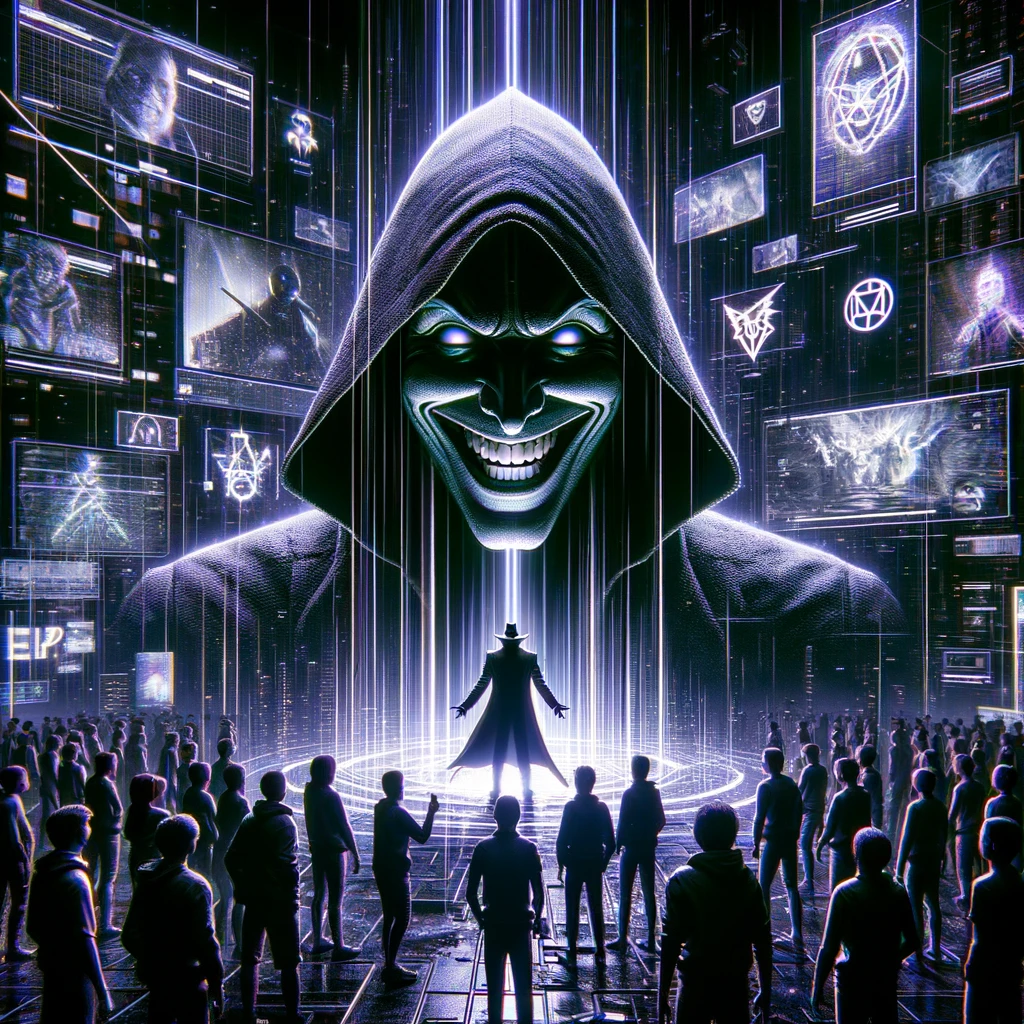Abstract
This article examines the potential influence of iconic characters—villains of mass culture—on destructive and aggressive youth behavior. The cultivation of certain societal groups and individual media characters can lead to the normalization of hostility and violence. This study analyzes the communication styles, intelligence, motives, aggression levels, and violent actions of famous villains from films, television, and literature. Particular attention is paid to the Joker’s communicative behavior, dialogues, and language, examining how he psychologically manipulates others and conveys his destructive views through unconventional techniques. Using textual examples from comic books and films, it analyzes how the Joker’s language choices and performative style reflect his background and moral-anarchic worldview. His rhetoric provokes violent reactions from allies and enemies alike, highlighting his ability to destabilize situations. The presented portrait reveals a multi-layered understanding of this legendary creation in different epochs and contexts. The findings indicate certain villain traits that could potentially encourage impressionable youth to engage in harmful behavior. Overall, provocative fiction has a double-edged significance as it can both shape and mislead developing minds. Recommendations are made to reduce the negative effects of glamorizing villains in entertainment media.
References
Althen, G. (2003). American ways: A guide for foreigners in the United States. Intercultural Press.
Anderson, C.A. & Bushman, B.J. (2002). Human aggression. Annual Review of Psychology, 53, 27-51. https://doi.org/10.1146/annurev.psych.53.100901.135231
Bandura, A. (1971). Social learning theory. New York: General Learning Press.
Bandura, A. (1999). Moral disengagement in the perpetration of inhumanities. Personality and Social Psychology Review, 3(3), 193-209. https://doi.org/10.1207/s15327957pspr0303_3
Basikova, A. A., Voroshilova, M. B. (2012). Lingo-cultural type of a blonde: associative signs. Lingvoculturologia, 6, 19–23. (In Russian).
Breskin, D. (1989). Inner views: Filmmakers in conversation. Faber & Faber.
DiPaolo, M. (2011). War, politics and superheroes: Ethics and propaganda in comics and film. McFarland.
Dmitrieva, O. A. (2007). Lingvokulturnyye tipazhi Rossii i Frantsii XIX veka: Monografiya [Linguistic and cultural types of Russia and France of the 19th century: monograph]. Volgograd: Publishing house of VGPU “Peremena”. (In Russian).
Gazizov, R. A. (2004). O statuse etiketnogo obshcheniya i ponyatii kommunikativnogo etiketa [On the status of etiquette communication and the concept of communicative etiquette]. Filologicheskiye Nauki, 14, 5–9. (In Russian).
Gerbner, G., & Gross, L. (1976). Living with television: The violence profile. Journal of Communication, 26(2), 172–194. https://doi.org/10.1111/j.1460-2466.1976.tb01397.x
Huesmann, L. R., Moise-Titus, J., Podolski, C.-L., & Eron, L. D. (2003). Longitudinal relations between children's exposure to TV violence and their aggressive and violent behavior in young adulthood: 1977–1992. Developmental Psychology, 39, 201–221. https://doi.org/10.1037/0012-1649.39.2.201
Hursthouse, R. (2013). Virtue ethics. In E. N. Zalta (Ed.), The Stanford encyclopedia of philosophy. https://plato.stanford.edu/entries/ethics-virtue/
Jonason, P. K., Webster, G. D., Schmitt, D. P., Li, N. P., & Crysel, L. (2012). The antihero in popular culture: Life history theory and the dark triad personality traits. Review of General Psychology, 16(2), 192–199.
Karasik, V. I. (2007). Yazykovyye klyuchi [Language keys]. Volgograd: Paradigma. (In Russian).
Karasik, V. I., Yarmakhova, E. A. (2006). Lingvokulturnyy tipazh “angliyskiy chudak” [Linguistic and cultural type “English eccentric”]. M.: Gnosis. (In Russian).
Karaulov, Yu. N. (1989). Russkaya yazykovaya lichnost i zadachi ee izucheniya [Russian linguistic personality and the tasks of its study]. Yazyk i lichnost, 3–8. (In Russian).
Mrug, S., Madan, A., & Wright, R. A. (2016). Emotional desensitization to violence contributes to adolescents’ violent behavior. Journal of Abnormal Child Psychology, 44(1), 75-86. https://doi.org/10.1007/s10802-015-9986-x
Nolan, C. (Director). (2008). The dark knight [Film]. Warner Bros. Pictures.
Ocheretyany, К. А. (2020). Super-non-hero: from superpower to ultra-violence. Galactica Media: Journal of Media Studies, 3, 27-46. https://doi.org/10.46539/gmd.v2i3.109
Paulhus, D. L., & Williams, K. M. (2002). The dark triad of personality: Narcissism, Machiavellianism, and psychopathy. Journal of Research in Personality, 36(6), 556-563. https://doi.org/10.1016/S0092-6566(02)00505-6
Prokhorov, Yu. E., Sternin, I. A. (2007). Russkie: kommunikativnoe povedenie [Russians: communicative behavior]. Moscow: Flinta: Nauka. (In Russian).
Shalina, I. V. (2009). Uralskoe gorodskoe prostorechie: Lingvokulturnye tipazhi [Ural urban vernacular: linguocultural types]. Izv. Ural. un-ta, 4(66), 134–143. (In Russian).
Ting-Toomey, S., & Chung, L. (2005). Understanding intercultural communication. Oxford University Press.
Vorkachev, S. G. (2001). Lingvokul'turologiya, yazykovaya lichnost', kontsept: Stanovleniye antropotsentricheskoy paradigmy v yazykoznanii [Linguoculturology, linguistic persona, concept: the formation of an anthropocentric paradigm in linguistics]. Philologicheckie Nauki, 1, 64–72. (In Russian).
White, M. D. (2008). Watchmen and philosophy: A rorschach test. John Wiley & Sons.!

This work is licensed under a Creative Commons Attribution 4.0 International License.


